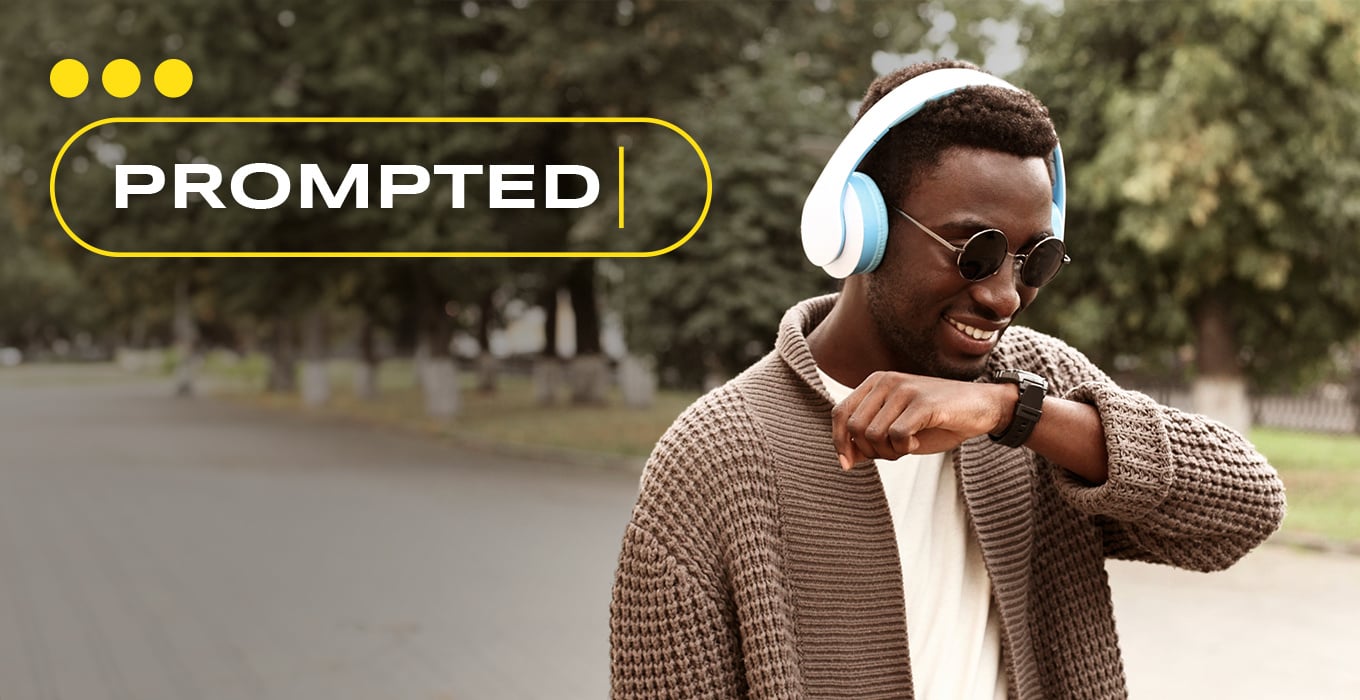Prompted: How to Turn AI’s Failures Into Wins

Posted By Tier One's AI Team on July 11, 2024
Generative AI has become more powerful since it first came to public attention, leading more marketers to expect it to act as a magic solution. But we haven’t reached the idealized vision of AI autonomously managing our tasks and running our lives just yet. The danger of an overreliance on AI is that it overlooks the technology’s limitations and ignores the importance of human expertise.
As we sit in the middle ground between experimenting with the tech and relying on it, paying attention to where AI is failing is more important than ever. By observing these missteps, we can leverage human insight to transform AI’s shortcomings into strengths.
Spinning Slop Into Gold
One purpose of generative AI is to create content — but what does an internet filled with machine-made material look like? As this new online world begins to take shape, a term is emerging to refer to the glut of low-quality AI content: slop.
Considered the AI equivalent to email’s spam, slop refers to the mediocre (and sometimes entirely factually incorrect) materials produced by these machines. Googling a topic and getting bizarrely phrased, keyword-stuffed blog posts at the top of the SERP? That’s slop. Seeing a flood of not-quite-human, not-quite-funny AI-generated memes on your social platforms? Also slop.
But just because AI sometimes starts with producing slop doesn't mean it has to end there. If you’re working with AI for research or content creation, you can elevate the tool’s output through continued prompting.
Remember, working with AI is like having a conversation with a human, albeit a human who needs some less-than-gentle prodding in the right direction. Generative AI tools like ChatGPT understand the patterns of human language. But they need specific guidance, and they don’t always deliver the information or material you need on the first try. Refine your ask and continue the conversation to get better results.
Learn more about the art of prompting from one of Tier One’s go-to experts on applied AI, Wharton professor Ethan Mollick.
Lessons From the Sea of Sameness
Figma, the browser-based design platform and Adobe competitor, got itself into a mess recently with its newest AI tool. Figma’s Make Designs feature was supposed to help creatives by quickly generating app templates — but users were quick to call out that the apps looked strikingly familiar. Figma pulled the tool down after the response, claiming they were too quick to release and are working on improving it.
Figma AI looks rather heavily trained on existing apps.
— Andy Allen (@asallen) July 1, 2024
This is a "weather app" using the new Make Designs feature and the results are basically Apple's Weather app (left). Tried three times, same results. https://t.co/Ij20OpPCer pic.twitter.com/psFTV6daVD
Whether it’s app design or blog posts, tools that democratize content creation can result in material that often feels like it’s all identical. But there’s a lesson in the sea of sameness. Based on these repetitive elements, what can you learn about what your audience expects — and how can you choose to stand apart from the crowd?
For example, blog posts generated by AI tend to have a well-defined structure with easy-to-navigate content, from clear headlines to bulleted lists. The Apple weather app Figma was so keen to copy is a cleanly designed app with consumer-friendly features. Just because these elements are predictable doesn’t mean they’re necessarily bad. But their ubiquity also presents the opportunity to do something different. What might a consumer want out of a weather app that Apple doesn’t have? That’s the place to ideate and get creative — and offer something useful to your audience that they don't already expect.
Not a One-Stop Shop
AI tool providers often promise their tech will be the magic tool that solves all our problems. Companies and developers would lead you to believe that with the press of a button, you can write an SEO-optimized blog post, design a website (or a suspiciously derivative weather app), or generate an ad for your brand. But just like all the tools in our creative arsenals, AI isn’t really a one-click wonder.
Toys “R” Us recently put out an AI-generated ad that got a lot of people talking — though not for all the right reasons. The brand’s creative team generated the ad using OpenAI’s Sora video tool, and while some edits may have been made in post, it’s clear the content came right from a machine: the animation is choppy, the character design fluctuates throughout the spot, and the music is simple and repetitive.
Just like a weird dream it is a different person each time you see them pic.twitter.com/5Vc85ElqO1
— syndrowm (@syndrowm) June 25, 2024
In contrast, a recent Motorola launch avoided the AI hate train, despite also being entirely created with generative AI tools. The “Styled by Motorola” campaign features AI-generated models showing off fashion designs inspired by the brand’s logo. But instead of prompting Sora and running with it, the Motorola team developed the spot over four months of research using nine different AI tools. You can still see some of the artificial influence — short clips and unnaturally smooth skin — but the ad looks much more lifelike and unique. From concept to execution, the campaign took a lot of refinement (read: human intervention!) to get a good final result.
Human + AI
As AI continues to improve, some users are ready to put their complete trust in the technology to let it run crucial parts of their lives (or just their content marketing jobs). But AI has its limits, and to make the most out of its successes, users also need to acknowledge its failures. Like all creative processes, effective AI usage involves iterative development, thoughtful refinement, and a good dose of human collaboration and expertise. As we continue to integrate AI into our workflows, maintaining a critical and hands-on approach will be essential to harnessing its full potential.
Prompted, our biweekly blog series, brings you relevant updates and insights on how to strategically add AI-driven solutions into your marketing toolkit. Subscribe to receive updates in your inbox.
.png?width=150&name=TierOneLogo_BADGE_RGB%20(1).png)
Tier One's AI Team
Tier One's AI Team is dedicated to exploring the latest developments in artificial intelligence — staying up-to-date with AI trends, testing innovative tools, and finding new ways to boost operational efficiency across marketing teams. This dynamic team’s curiosity about AI drives them to continually seek creative and impactful ways to leverage technology, ensuring our agency’s integrated marketing strategies remain effective, ethical, and forward-thinking.



